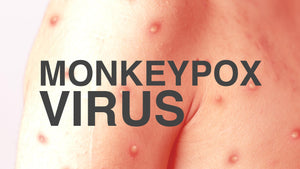
Prevention of infection during the monsoon season
Most monsoon illnesses share fever as the common symptom. The right diagnosis forms the cornerstone of getting the right course of treatment and helps you recover early. The most common diseases during monsoons are transmitted through four primary mediums: mosquitoes, water, air, and contaminated food.
Mosquito-borne diseases:
Monsoons are considered to be the breeding season for mosquitoes and mosquito-borne diseases. India faces a massive burden of mosquito-borne diseases, contributing 34% of global dengue and 3% of global malaria cases.
- It is a life-threatening disease caused by plasmodium parasites, which are transmitted through the bite of infected female Anopheles mosquitoes
- Although it is preventable and curable, it accounted for approximately four lakh deaths in 2019, globally
- Children aged under 5 years are the most susceptible group affected by malaria
- Its transmission depends on climatic conditions with peaks during and just after the rainy season
- Symptoms usually appear 10–15 days after the infective mosquito bite, which can include:
- High fever
- Body ache
- Moderate to severe chills
- Fall in body temperature resulting in excessive sweating
- Headaches
- Nausea
- Vomiting
- Diarrhoea
Dengue:
- It is a mosquito-borne viral disease transmitted by female mosquitoes mainly of the species Aedes aegypti;
- Dengue virus usually produces only mild flu-like illness. However, occasionally this develops a potentially lethal complication called dengue haemorrhagic fever;
- Symptoms usually persist for 2–7 days, after an incubation period of 4–10 days after the bite from an infected mosquito;
- Dengue should be suspected when a high fever (40°C/104°F) is accompanied by two of the following symptoms:
- Severe headache
- Pain behind the eyes
- Muscle and joint pains
- Nausea
- Vomiting
- Swollen glands
- Rash
Tips for Prevention from mosquito-borne diseases:
Malaria, dengue, and other mosquito-borne diseases usually present with high fever, chills, body aches, and fatigue. If you notice any of these symptoms, consult a doctor immediately.
Follow these preventive measures as monsoons start:
Prevention of mosquito breeding:
- Don’t allow water to stagnate or collect anywhere in and around the house;
- Domestic water storage containers such as coolers, buckets, etc. should be covered, emptied and cleaned weekly;
- Dispose solid waste properly;
- Maintain hygiene and wash your bathrooms regularly;
- Properly use insecticides to treat water storage/outdoor containers.
Personal protection from mosquito bites:
- Use personal household protection measures, like repellents, insecticide-treated nets etc. These precautions must be implemented during the day, both inside and outside of the home, as mosquitoes bite throughout the day, mostly;
- Wear clothes that reduce skin exposure to mosquitoes;
- Sleep under an insecticide-treated net, reducing contact between mosquitoes and humans.
Waterborne diseases
According to WHO, at least 2 billion people use a contaminated drinking water source, which is estimated to cause more than 4.8 lacs of diarrhoeal deaths yearly. Children are the easiest victims because of a developing immune system. It has been reported that 2.9 lac deaths in children under 5 years could be avoided each year if they had access to safe drinking water.
Typhoid:
- Typhoid fever is a life-threatening infection caused by Salmonella Typhi;
- It is usually spread through uncovered or spoilt food or contaminated water;
- Reports suggest that 11–20 million people get sick from typhoid, and between 1.2 to 1.6 lac people die from it every year globally.
Symptoms include:
Prolonged fever, Fatigue, Headache, Nausea, Abdominal pain, Constipation, and Diarrhea.
Cholera:
- Cholera is caused by ingestion of food or water contaminated with the bacterium Vibrio cholerae;
- It is associated with diarrhea, which can kill within hours if left untreated;
- WHO reports that each year world faces 1.3 to 4.0 million cases of cholera;
- Most of those infected have no or mild symptoms, including watery loose motions with severe dehydration.
Leptospirosis:
- Leptospirosis is a disease that affects humans and animals and is caused by bacteria of the genus Leptospira;
- The bacteria spreads through the urine of infected animals, which can get into water or soil and can survive there for weeks to months;
- It occurs most commonly in monsoons due to contact with dirty water or muck/mud;
- It can cause a wide range of symptoms, including high fever, headache, chills, etc.
Other commonly occurring diseases due to contaminated water include jaundice, hepatitis A, and gastrointestinal infections like gastroenteritis.
Tips for Prevention from food and waterborne diseases
- Ensure clean and safe drinking water;
- Cautious about adequate sanitation and hygiene among food handlers;
- Keep your hands clean by washing them consistently;
- Always boil water and wash fruits and vegetables thoroughly before consumption;
- Ensure open drains and potholes in your locality are covered
- Do not swim in water that might be contaminated with animal urine;
- Eliminate contact with potentially infected animals;
- Get your children vaccinated if they are not already.
Air borne diseases:
Monsoon triggers multiple air-borne infections transmitted by tiny pathogens through the air, resulting in flu, common cold, cough, and sore throat. Older people and children are more prone to infections during this season due to a weak or developing immune system.
Common cold:
- Sudden temperature fluctuations during the monsoon can cause common cold and flu-like viral infections;
- Common cold and flu have similar symptoms; it can be difficult to differentiate between them based on symptoms alone;
- Flu is worse than the common cold, and symptoms are more intense, whereas colds are usually milder than flu.
Tips for Prevention from Air borne diseases
- Cover your mouth and nose while coughing or sneezing;
- Keep your children away from people who are already infected;
- Maintain proper hygiene by washing hands and feet thoroughly once children come home from the outdoors;
- Drink warm water every few hours;
- Keep your homes well-ventilated at all times;
- Get vaccinated with the flu vaccine every year.
Prevention is always better than cure; therefore, keeping informed and protecting yourself and your family from these common monsoon diseases in India is essential. However, do not self-diagnose and avoid over-the-counter medication. If you experience any of the symptoms mentioned above, consult your doctor immediately.







